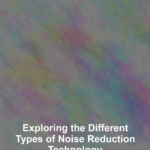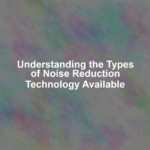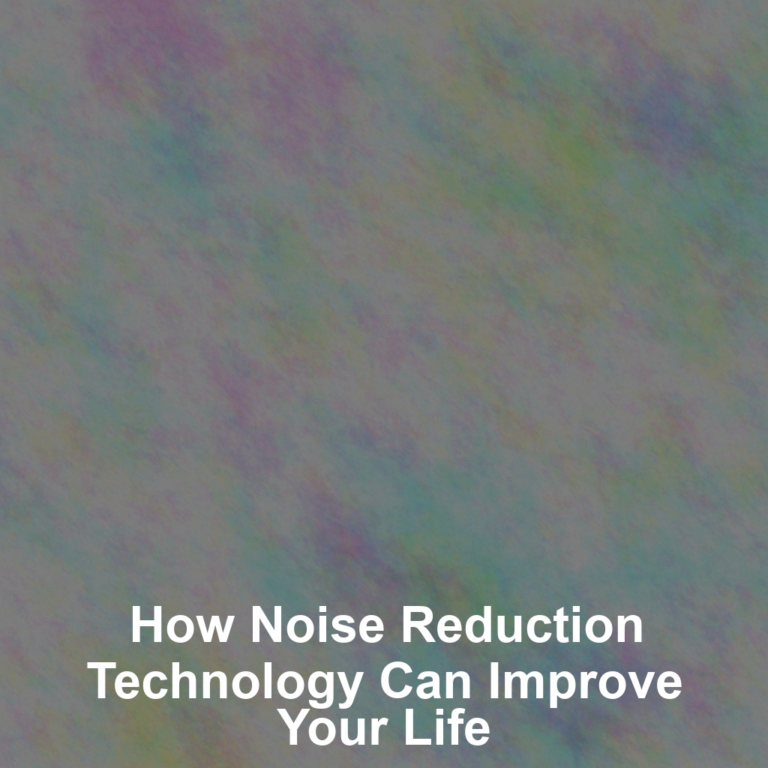In an ever-buzzing world, finding your oasis of tranquility can be a challenge amidst the symphony of background sounds that color your daily life. YouG??re constantly bombarded with a cacophony from the streets, the hum of appliances, or even the drone of an office environment.
But fear not, as the quest for auditory serenity doesnG??t have to be a Sisyphean task. With a range of noise reduction technologies at your disposal, you can tailor your sound landscape to one that suits your needs. From active noise-canceling devices that can hush the roar of jet engines to passive noise isolation techniques that buffer you from the chatter of the outside world, each solution offers its unique blend of silence and sound.
But how do you determine which technology is the perfect fit for your situation? As you consider the symphony of options, remember that the right choice could transform your everyday soundscape into a harmonious haven.
Understanding Sound and Silence
To grasp the nuances of noise reduction technology, itG??s essential to first understand what sound is and what it means for a space to be truly silent. Sound is a form of energy made by vibrations, traveling through air, water, or solids as waves. When these waves hit your ears, theyG??re translated into the sounds you hear.
But what about silence? ItG??s not merely the absence of sound; itG??s the presence of a quiet so profound that you become aware of even the subtlest noisesG??an ambient hum, a distant bird, or your own heartbeat. Achieving this level of quietude is what noise reduction technologies strive for.
YouG??re constantly surrounded by noise, whether youG??re aware of it or not. Traffic, machinery, electronics, and even everyday conversations contribute to your aural landscape. Noise reduction tech aims to minimize these unwanted sounds, creating environments that are more conducive to concentration, relaxation, or whatever your space requires.
There are various methods to reduce noise, from simple solutions like earplugs to advanced technologies like active noise cancellation. Each tackles sound differently, but they all share the same goal: to give you control over your auditory environment, enhancing your comfort and focus. Understanding these principles is the first step in choosing the right noise reduction technology for you.
Active Noise-Canceling Devices
Active noise-canceling (ANC) devices work by creating sound waves that mirror and neutralize the unwanted ambient noise in your environment. This means you can immerse yourself in your music or find peace in a noisy setting.
Picture yourself in these scenarios:
-
Peaceful Commutes: YouG??re on a crowded train, but itG??s just you and your favorite podcast. The rumble of the tracks and the chatter around you fade away, leaving you in a bubble of contentment.
-
Focused Work Sessions: YouG??re at the office, and the buzz of conversations is relentless. With ANC headphones, itG??s like youG??ve got your own silent office. The distractions are gone, and youG??re in the zone, productivity soaring.
-
Tranquil Flights: The drone of the airplaneG??s engines is usually enough to fray anyoneG??s nerves. But you? YouG??re calmly watching a movie or drifting into a restful sleep, unbothered by the roar thatG??s silenced by your ANC device.
ANC technology isnG??t just about silence; itG??s about creating your own acoustic environment where you control what you hear. YouG??re not just buying a gadget; youG??re investing in your peace of mind.
Passive Noise Isolation Techniques
While active noise-canceling technology uses sophisticated electronics to reduce unwanted sound, passive noise isolation relies on the physical design and materials of the device to block out ambient noise. YouG??ve probably encountered this technique when using over-ear headphones with cushioned ear cups that snugly fit around your ears, creating a seal against external sounds.
Think of passive noise isolation as a barrier. It doesnG??t require power to work; instead, it uses the mass and density of the materials to prevent sound waves from reaching your eardrums. This means youG??re not dependent on batteries or electronic components to enjoy a quieter environment. ItG??s particularly effective against high-frequency sounds, like human voices or the clattering of a keyboard.
YouG??ll find that foam tips on earbuds also serve this purpose. When you insert them into your ear canal, they expand to fill the space, blocking out a significant amount of noise. ItG??s a simple solution, but remarkably effective.
However, remember that the effectiveness of passive noise isolation can vary based on the fit and quality of the materials. If youG??re looking for headphones or earbuds, pay close attention to the seal they create. ItG??s a crucial factor in determining how well theyG??ll keep unwanted noise at bay.
Sound Masking Systems
Moving beyond individual devices like headphones, sound masking systems work throughout an environment to minimize distracting noise by adding a subtle, unobtrusive background sound. This technology is particularly effective in open-plan offices or healthcare facilities, where privacy and concentration are crucial.
You might wonder why youG??d want to introduce more sound to reduce noise. Well, itG??s not about volume; itG??s about consistency and frequency. The ambient noise created by sound masking is engineered to match the frequencies of human speech, making other sounds less intelligible and therefore less distracting.
HereG??s how sound masking can emotionally benefit you:
-
Stress Reduction: Drowning out unpredictable, jarring office sounds can lower your stress levels, making you feel calmer and more at ease.
-
Improved Focus: By muffling conversations and other noise pollution, youG??re less likely to be pulled away from your tasks, helping you stay focused and productive.
-
Better Privacy: For conversations that you donG??t want to be overheard, sound masking adds a layer of acoustic privacy, giving you peace of mind when discussing sensitive information.
Architectural Acoustic Treatments
Architectural acoustic treatments are designed to enhance the sound quality within a space by strategically absorbing, dampening, and diffusing unwanted noise. YouG??ve likely come across these solutions in places where aural comfort is paramountG??think concert halls, recording studios, and even upscale restaurants where the clatter of cutlery isnG??t part of the ambiance.
When youG??re deciding on the right treatment for your space, youG??ll need to consider a range of materials. Acoustic panels, for instance, can be mounted on walls or ceilings to capture and convert sound energy into heat. TheyG??re often made from foam or fibrous materials and can be customized to fit the aesthetic of your room.
If youG??re dealing with echoes, diffusers are your go-to. They scatter sound waves, reducing focus and creating a more even sound field. Bass traps, on the other hand, are essential for controlling low-frequency noise, which is tougher to tame and can make your space feel boomy.
ItG??s not just about function, though. These treatments come in various shapes and sizes, allowing them to double as art pieces or blend seamlessly with your decor. Choose wisely, and youG??ll find that the right architectural acoustic treatments donG??t just sound goodG??they look good, too.
Conclusion
Now youG??ve seen the spectrum of noise reduction technologies available to you. Whether you opt for active noise-canceling gadgets, passive isolation methods, sound masking systems, or architectural acoustic treatments, the right choice depends on your specific needs and environment.
DonG??t let unwanted noise disrupt your peace. Find the perfect solution, tune out the distractions, and embrace the tranquility that awaits. Remember, in the battle against noise, youG??re now well-equipped to emerge victorious!











